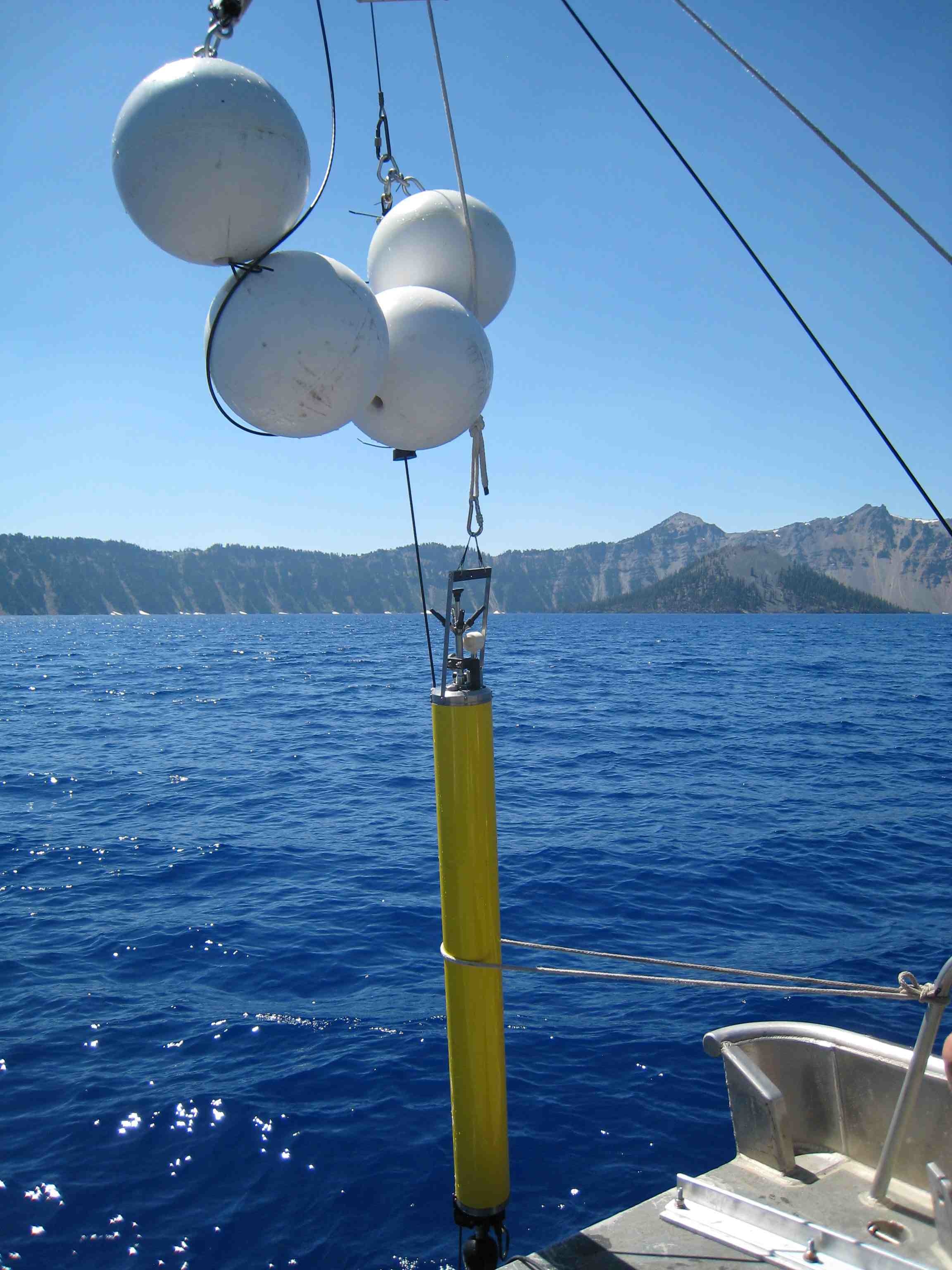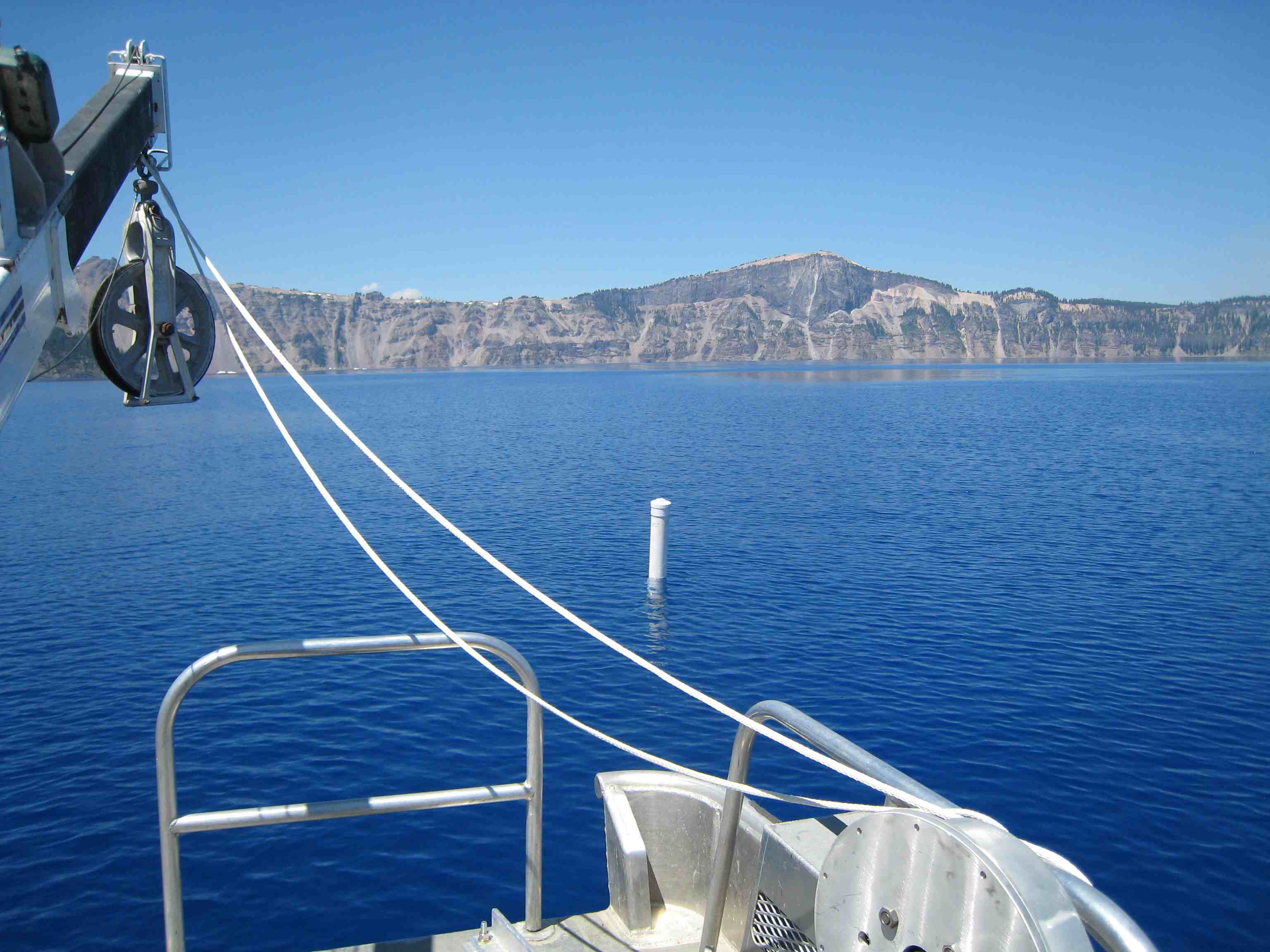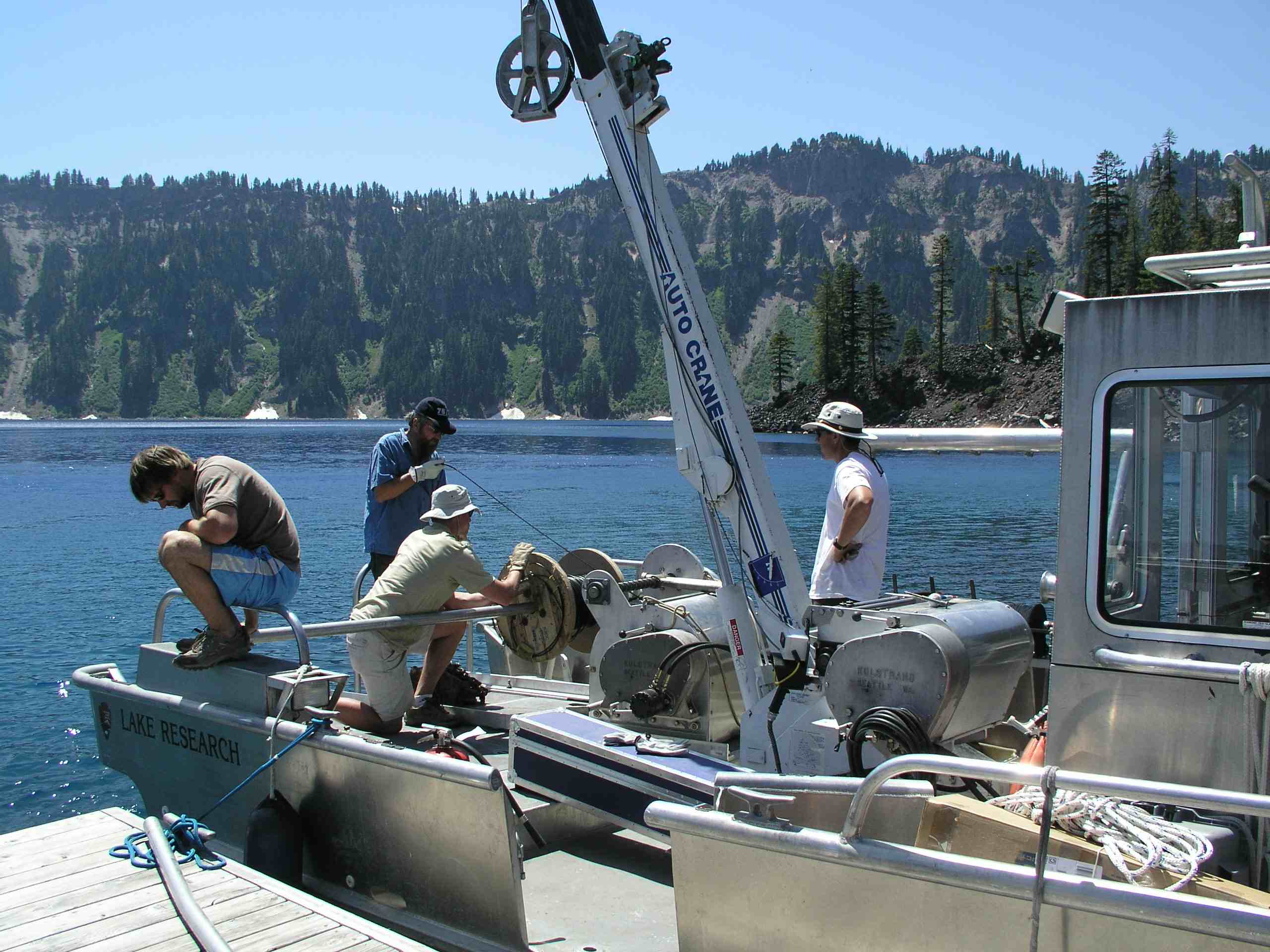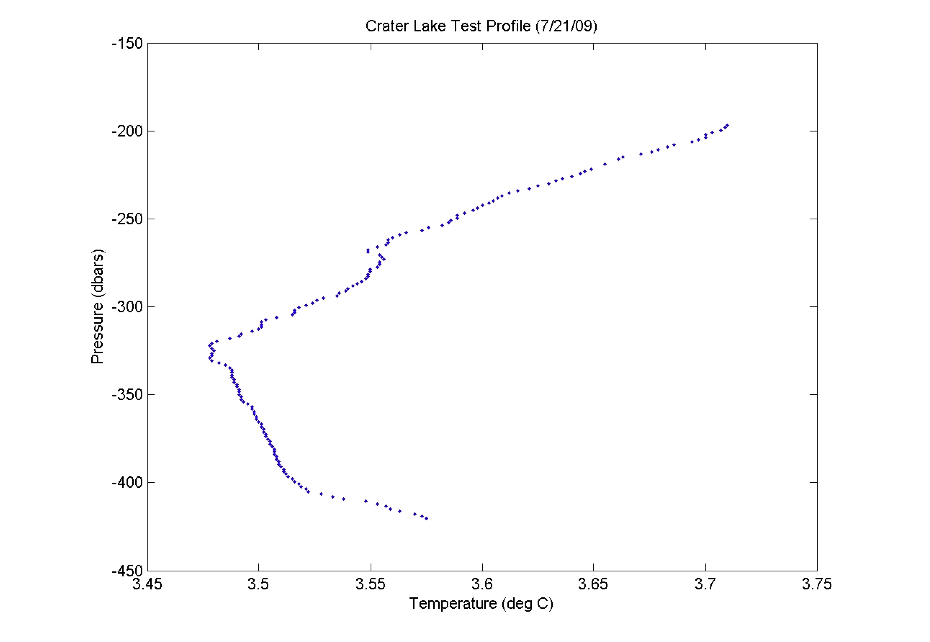Crater Lake Test
Lake Deployment
|
With generous support from the U.S. National Park Service, the PIG profiler was deployed at a hydrothermal vent site in Crater Lake, OR for 4 days in July 2009. A 420-m long conducting cable taught mooring with 30m deep subsurface floats was made for this deployment. A small, surface spar buoy supported a receiving inductive modem and 1-GHz radio link, which permitted communication with the profiler at the experiment site (see Figures). We received outstanding help from Park Service scientists Scott Girdner and Mark Buktenica and two Park Service science technicians, had the use of an extremely well-equipped ,30-foot research launch, and enjoyed the remarkable environment of Crater Lake for these tests. While limitations of the RF link and our overnight camp location on Wizard Island meant that we were not able to continuously monitor and control the profiler, the time spent near the mooring and running direct diagnostics provided an opportunity to make significant progress on the profiler software design. The buoyancy engine, data acquisition system, sensors (temperature, conductivity, 3D velocity and precision pressure) all worked extremely well, allowing us to focus on refinement of the profiler state machine and error handling capabilities.
|
The profiler was deployed in Crater Lake in an area of hydrothermal activity at a depth of 460m. The sub-surface floats and upper stopper can be seen above the profiler just before deployment. Full resolution image
 |
|
A 1-GHz radio modem in a surface spar buoy provided communications with the profiler providing transmission of data and diagnostic information, and the ability to control the instrument and change setup parameters while it was deployed. Full resolution image
 |
|
The insulated tether cable was spooled onto the main hydraulic winch prior to the instrument deployment at the dock on Wizard Island. The profiler transits up and down this mooring line while communicating with the surface using an inductive modem.Full resolution image
 |
|
|
Preliminary Results
|
|
An example of a temperature profile measured during the field trials at Crater Lake. The data was captured through a sub-sampled data stream transmitted through a RF link. The increase of temperature due to hydrothermal activity at the site can be seen as the profiler approaches the lake bed at 460m.
 |
|
|
|